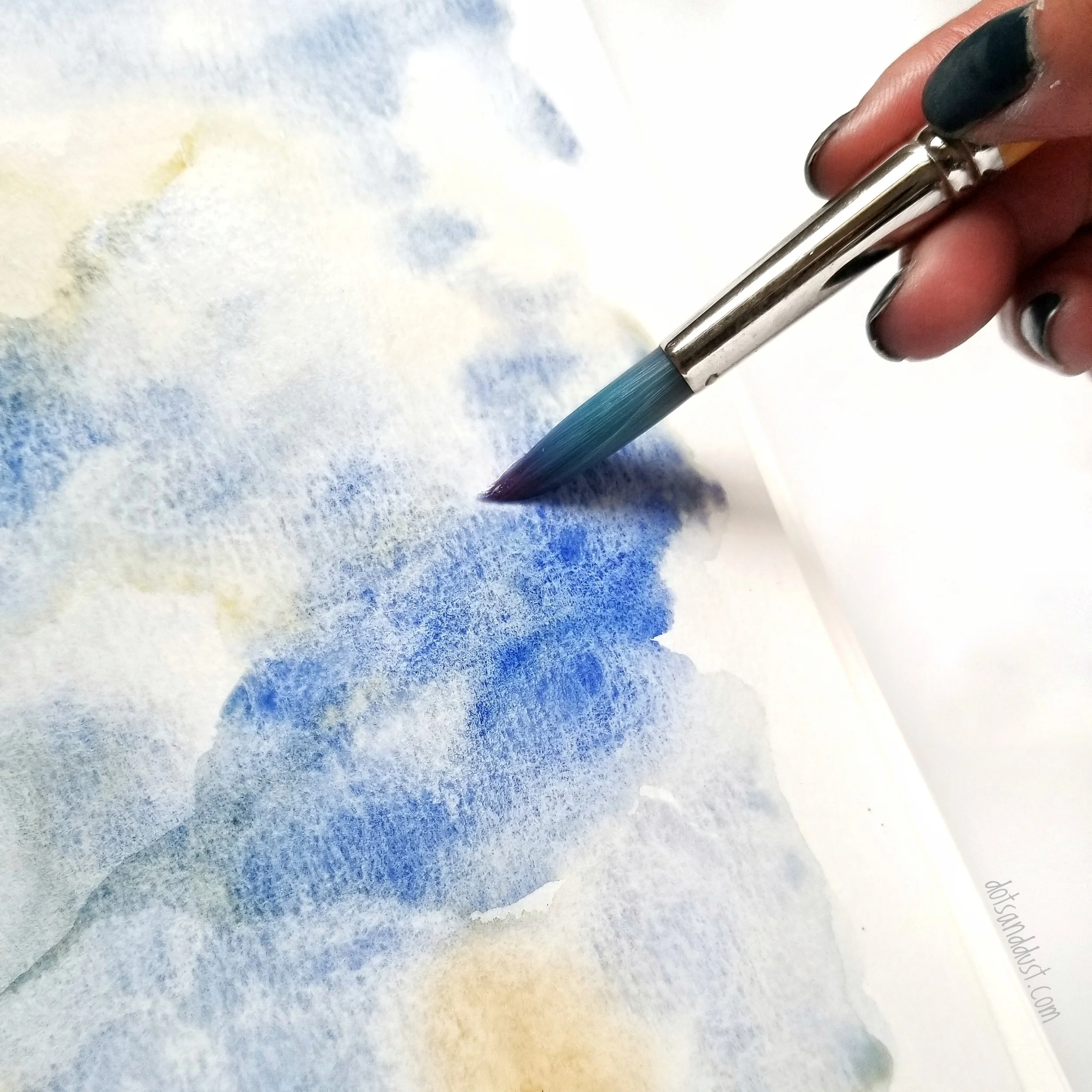5 Common Mistakes that Watercolor Beginners Make (and How to Avoid Them)
Starting watercolor can feel magical — until your colors turn muddy, your paper warps, and nothing looks quite like the Pinterest photo you were hoping for.
Don’t worry, my friend. I’ve been there.
I promise, every watercolor artist you admire has been there too. The truth is, most watercolor frustration comes from a few simple mistakes — and once you know how to avoid them, painting becomes peaceful and fun again.
Now, if you have been a part of the Dots & Dust family for some time, you may have remembered I did a blog post similar to this one a few years back (Watercolor Mistakes You Want to Avoid). But I wanted to make things a little easier by sharing these 5 of the most common watercolor beginner mistakes (and how to fix them so you can start painting with confidence).
Mistake #1: Using Too Much Water
It’s called watercolor, but too much water can make your colors dull or cause puddles on your paper. You want whatever you paint on your paper to glisten, but not pool up.
Try this instead: Practice loading your brush with the right amount of paint and water — think of the consistency like “tea, milk, and butter.” I also like to remind my students to do the “tilt test.” If you paint a swatch, tilt your paper up slightly, and there is a water droplet forming at the boundary of your swatch, then you have too much water. How to fix that? Grab a small piece of paper towel and touch the water droplet on your paper to soak up the excess paint.
Mistake #2: Overworking the Painting
We all want to try to “fix” a petal or make a leaf perfect, but scrubbing the paper only makes it worse. Believe me. You don’t know how many paintings I kind of ruined after I tried to “fix it” to quickly. 🤣
Try this instead: Let your paint layers dry completely before going back in. A lot of people don’t realize that watercolors tend to dry lighter than they are when they are wet. So if you are unsure about the way something looks, take a breath, and step away from your painting for a bit. I almost always will do this if I am unsure if I need to add something to a painting. Remember, watercolor rewards patience! And most of the time when you come back, even if it’s a full 24 hours later, you realize that you love the painting just how it is.
Mistake #3: Choosing Low-Quality Paper
Even great paint can’t perform well on thin paper that buckles or pills. And if you are working with landscapes or the wet-on-wet technique, you are going to want to make sure that buckles don’t mess your masterpiece.
Try this instead: Use at least 140 lb. cold-press watercolor paper — even affordable student-grade options will make a big difference. Want to make sure that paper REALLY isn’t gonna go anywhere? Try either getting a block of watercolor paper that is glued down on all four sides. Or you can even use washi or artist tape to tape your paper down to your working surface or a clip board.
Mistake #4: Mixing Too Many Colors
Most beginners get over zealous with paint colors and figure that you need to have a bunch of different ones to use when you start off.
Absolutely not true!
When you mix too many hues (especially in a single painting) they can turn muddy fast.
Try this instead: Stick to 2–3 colors per piece and focus on harmony. Simplicity almost always looks more intentional and peaceful. Plus, when you limit your colors, you can focus on mastering techniques like perspective, color harmony, and values.
Mistake #5: Expecting Perfection
💛 Final Thoughts
If you’ve been frustrated trying to make watercolor “work,” don’t give up. These small shifts can completely change your painting experience.
And if you’re ready to start watercolor the peaceful way — step by step, without overwhelm — I created something special for you.
👉 Grab my The Basics to Watercolor: A Beginner’s Guide— it’s the gentle roadmap I wish I had when I first started.
Inside, you’ll learn how to:
Pick the right supplies without overspending
Master brush control and water flow
Paint simple, beautiful florals (even if you’re brand new)
Build confidence through small, easy wins
Remember…You don’t need to be an artist. You just need to start.

















